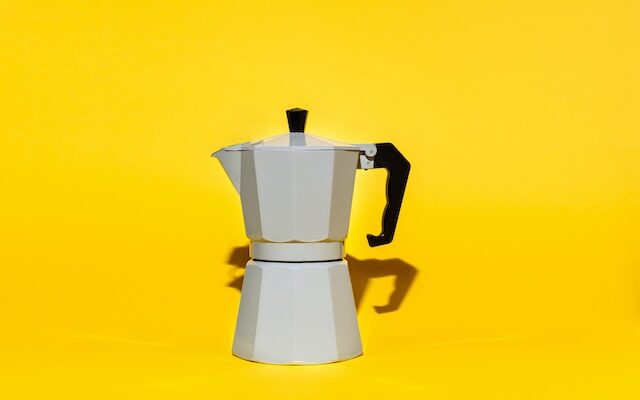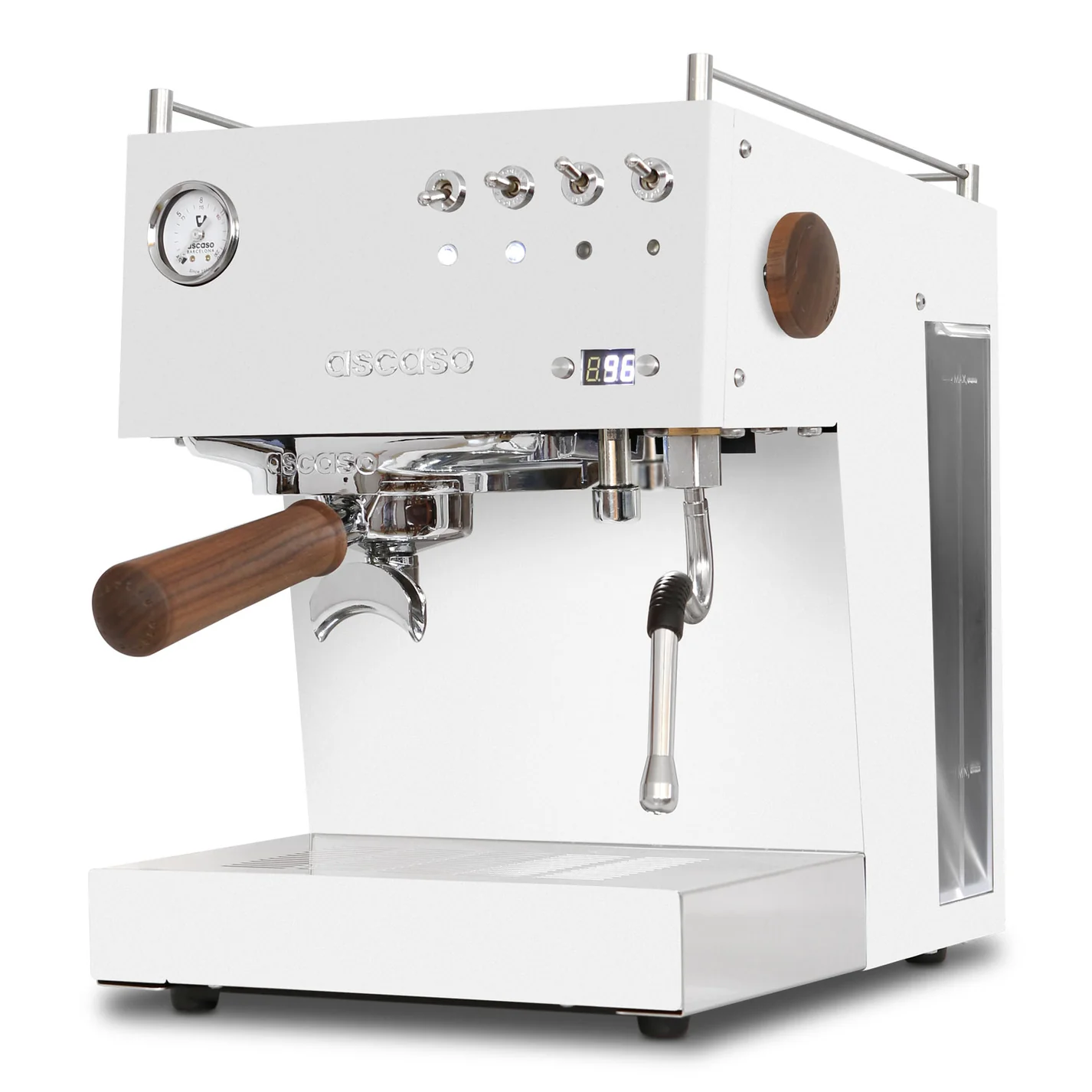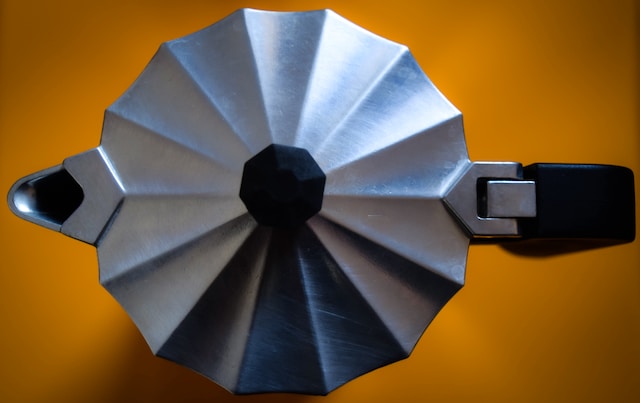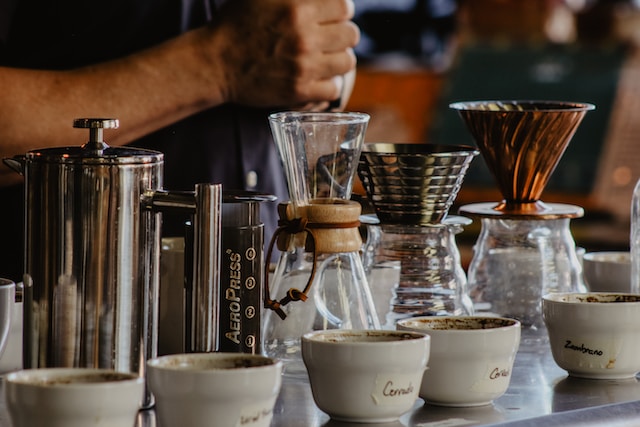Best Coffee for Moka Pot: A Guide to Brewing the Perfect Cup

If you want to refresh your coffee brewing routine, the Moka pot is a great option. This stovetop espresso maker is popular in Italy and is known for producing strong coffee similar to espresso.
But how do you choose the best coffee for Moka pot? Some coffee beans are better suited for the Moka pot than others. This article explores the best coffee for the Moka pot and how to brew it for the perfect cup.
When selecting coffee for Moka pot, there are a few things to remember. First, you’ll want to choose a medium to dark roast coffee. This will ensure the brewed coffee has the robust espresso-like flavor the Moka pot is known for.
But before we get to selecting coffee for Moka pot, let’s look at the Moka pot itself to understand this unique brewing device better.
Table of Contents
Understanding the Moka Pot
History and Origin
The Moka Pot is a classic Italian coffee maker that has been around for almost a century. It was invented in 1933 by Alfonso Bialetti, who wanted to create a simple and affordable way for people to make espresso at home. The Moka Pot quickly became popular in Italy and has since become a staple in many households worldwide.

How Moka Pot Works
The Moka Pot is a stovetop coffee maker that uses steam pressure to brew coffee. It consists of three parts: the lower chamber, the filter basket, and the top chamber. You fill the lower chamber with water and the filter basket with coffee grounds to use it. Then, you screw the top chamber onto the bottom chamber and place the Moka Pot on the stove.
What’s fascinating about the Moka pot is that it essentially brews coffee upside down compared to other filter coffee methods. As the water heats up, it produces steam, forcing the hot water up through the ground coffee and into the top chamber. The espresso coffee is then ready to be poured and enjoyed.

Different Types of Moka Pots
Many types of Moka Pots are on the market today, but the most popular is still the Bialetti Moka Pot. It comes in various sizes and colors and is known for its durability and ease of use.
Other Moka Pots include electric Moka Pots, which plug into an outlet and heat up automatically, and stainless steel Moka Pots, which are more durable and easier to clean than traditional aluminum Moka Pots.
No matter which type of Moka Pot you choose, it’s important to remember to use caution when handling it. The Moka Pot can get hot, so you may need an oven mitt or kitchen towel when removing it from the stove. Additionally, the Moka Pot has a safety valve that will release pressure if it gets too high, so be sure to keep an eye on it while it’s brewing.
The Moka Pot is a great way to make espresso-style coffee at home for yourself or a group of friends. It’s affordable, easy to use, and always produces a delicious cup of coffee.

Choosing the Right Coffee for Moka Pot
Selecting the proper coffee for Moka pot is vital to achieving a delicious and satisfying cup. This section will discuss the importance of roast level, flavor profile, and grinding coffee for Moka pot.
Importance of Roast Level
The roast level of coffee can significantly impact the flavor and strength of the resulting brew. We recommend using medium to dark roast coffee for Moka pot brewing. Dark roast coffee is often preferred as it will produce coffee most closely resembling classic espresso.
However, some coffee enthusiasts (… slowly raises hand) prefer a medium roast as it can provide a more balanced flavor profile. Ultimately, the choice of roast level depends on personal preference; there is no wrong or right coffee for Moka pot.
Grinding Coffee for Moka Pot
Grinding coffee for Moka pot requires a fine grind, allowing for optimal flavor and aroma extraction without clogging the filter basket. The grind will resemble table salt.
We recommend grinding whole-bean coffee just before brewing for the freshest taste. However, you may use pre-ground coffee if it is finely ground.

Brewing Method for Moka Pot
Coffee to Water Ratio
Using the ideal coffee-to-water ratio is crucial for brewing the perfect cup of coffee with a Moka pot. We recommend using a ratio of 1:10, which means using one part coffee to 10 parts water. For example, if you’re using 14 grams of coffee, you should use 140 grams of water.
Step-by-Step Guide
- Fill the bottom chamber of your Moka pot with hot water, but do not fill it above the safety valve.
- Grind your coffee beans to a fine consistency. Fill the filter basket with coffee grounds until level, but do not tamp them down.
- Place the filter basket on top of the bottom chamber. Screw on the top chamber of the Moka pot.
- Place the Moka pot on a stove set to medium heat.
- Wait for the water to boil and the coffee to start coming out of the spout, then reduce the heat to low while the coffee is brewing.
- The entire brewing process should only take a few minutes, so don’t stray too far.
- Listen for the gurgling to stop, meaning the coffee has finished brewing. Remove the Moka pot from the stove and pour the coffee into your cup(s).

When brewing with a Moka pot, it’s important to remember that the pressure created during the brewing process is what extracts the coffee’s flavor and aroma. Therefore, using the right amount of heat to create the correct pressure is essential. Start with medium heat, then reduce to the lowest setting once the coffee begins to brew.
We recommend using hot water instead of cold water when filling the bottom boiler of your Moka pot. Using hot or boiling water will help the water reach the right temperature more quickly and create the necessary pressure for brewing.
Overall, the Moka pot brewing method is a simple and easy way to brew delicious coffee at home. With the correct coffee-to-water ratio and a few simple steps, you can enjoy a rich and flavorful cup of coffee anytime.
Best Coffee Brands for Moka Pot
You can use just about any coffee for Moka pot, but a few brands scream (er.. gurgle) classic Italian stovetop espresso.

Illy Coffee
Illy Coffee is a well-known brand that has produced high-quality coffee for over 80 years. Their coffee consists of 100% Arabica beans, carefully selected and roasted to perfection.
We love the Illy Intenso blend for its rich, smooth, and well-balanced flavor that is perfect for Moka pots. Their coffee is available in whole bean and ground form, making it easy to use with a Moka pot.
We are also particularly fond of Illy’s packaging. They have reimagined the coffee can, using a pressurized canister that ensures beans shipped from Italy stay fresh during their journey.

Lavazza
Lavazza is a well-known Italian coffee brand that has been producing coffee for over 120 years. They offer a wide range of coffee blends perfect for Moka pots. Lavazza Tierra Organic Amazonia is a medium roast blend of 100% Arabica beans from Peru with a rich, full-bodied flavor with chocolate, floral, and dried fruit notes.
This blend makes an exciting coffee for Moka pot, as it’s a bit lighter roast than you might traditionally reach for when brewing with a Moka pot. Almost like chocolate-covered strawberries. Hello, delicious.

Caffè Borbone
Caffè Borbone is a lesser-known brand in the US, but it has been producing high-quality coffee in Naples, Italy, since 1997. While it gained popularity for its FSC-certified, compostable coffee pods, it also sells its delicious blends in whole-bean and ground form.
We are fond of the Crema Superiore coffee for Moka pot, a blend of Arabica and Robusta beans with a smooth finish and subtle brown sugar nuance.
Maintaining Your Moka Pot
When using a Moka pot, it’s crucial to maintain it properly to ensure it continues functioning well and produces delicious coffee.
Cleaning Process
Cleaning your Moka pot is a crucial step in maintaining it. After each use, we recommend disassembling and washing the pot thoroughly with warm water. Be sure to clean the filter basket and the rubber gasket as well. If there are any stubborn stains or coffee residue, you can use a gentle, non-abrasive cleaner to remove them.
It’s important to note that Moka pots with aluminum bodies should not be put in the dishwasher, as the high heat and harsh detergents can cause damage.

Safety Measures
Following safety measures to prevent accidents is critical when using a Moka pot. First, ensure the handle is securely attached to the pot and cool to the touch before handling it. If it is hot, use an oven mitt or kitchen towel. Additionally, always use a heat-resistant surface when placing the Moka pot on the counter.
Longevity
With proper care, a Moka pot can last for many years. However, it’s important to note that aluminum Moka pots can corrode over time, especially if not cleaned properly. Plastic Moka pot handles can also become brittle and crack over time, but replacement parts are available for most Moka pots.

Maintenance
In addition to regular cleaning, you can do a few things to maintain your Moka pot. First, replace the rubber gasket periodically, as it can become worn and affect the seal. Additionally, if you notice any cracks or damage to the pot handle, it’s best to replace it to prevent accidents.
Maintaining your Moka pot is a simple process that can ensure that it continues producing delicious coffee for years to come. By following these tips and taking care of your pot, you can enjoy a perfect cup of coffee every time.

Moka Pot Vs. Other Brewing Devices
There are various coffee brewing methods to choose from. Let’s compare the Moka pot to a few popular home brewing devices.
Moka Pot Vs. Espresso Machine
Espresso machines are known for their ability to produce a rich, concentrated shot of coffee. While Moka Pots can also create a robust and full-bodied coffee, the two have some critical differences.
One significant difference is the amount of pressure used to extract the coffee. Espresso machines use high pressure, typically around 9 bars, while Moka Pots only use around 2 bars. The added pressure from the machine means that espresso shots generally are smoother with more crema than Moka Pot coffee.
Another difference is the level of control over the brewing process. With an espresso machine, you can adjust the grind size, tamping pressure, and water temperature to fine-tune the flavor of your shot. Moka Pots, on the other hand, have fewer variables to adjust and may require some trial and error to get the perfect cup.

Moka Pot Vs. French Press
French Presses, also known as press pots or plunger pots, are popular brewing devices for their simplicity and ability to produce full-bodied coffee. However, they have some key differences from Moka Pots.
One significant difference is the brewing time. French Presses require a longer brewing, typically four minutes, while Moka Pots brew a bit faster. The grind size is also significantly different; the French press requires a coarse grind, while the Moka pot uses a fine grind. The brewing speed and grind size affect the flavor profile of the coffee with French Presses, so it is vital to experiment with both to achieve the flavor you’re after.
Another difference is the level of grit or sediment in the coffee. French Presses can produce coffee with sediment, which can be off-putting to some people. Moka Pots, on the other hand, create a cleaner cup of coffee with less silt.

Moka Pot Vs. Pour Over
Pour Over is a manual brewing method that involves pouring hot water over coffee grounds to extract the flavor. While it may seem similar to Moka Pot brewing, some key differences exist.
One significant difference is the level of control over the brewing process. With Pour Over, you have complete control over the water flow rate, pour technique, and temperature. This level of control can result in a more nuanced and complex flavor profile compared to the simplicity of Moka Pot coffee.

Another difference is the level of acidity in the coffee. Pour over brewing tends to produce coffee with a higher acidity level, which can be desirable for some coffee drinkers. Moka Pot coffee, on the other hand, tends to have a lower acidity level and a more full-bodied flavor.
Overall, each brewing method has its unique advantages and disadvantages. It ultimately comes down to personal preference and the flavor profile you’re looking for in your coffee.

Frequently Asked Questions
What kind of coffee do you put in the Moka pot?
We recommend using medium to dark roast coffee for Moka pot. Grind the coffee to a fine consistency, similar to table salt. This grind size allows for even and consistent coffee extraction.
Is robusta or arabica coffee better for Moka pot?
We recommend using arabica coffee for Moka pot. Arabica beans have a more complex flavor profile and are less bitter than robusta beans. However, if you prefer your coffee to have a little bite, you can use a blend of arabica and robusta beans.
What is the best Italian coffee brand for Moka pot?
Many great Italian coffee brands produce coffee specifically for Moka pots. Some of the best brands include Illy, Lavazza, and Bialetti (yes, they make coffee, too!). However, the best brand for you will depend on your taste preferences.
Can any ground coffee be used for Moka pot?
While you may technically use any ground coffee for Moka pot, it is crucial to use finely ground coffee. We recommend buying whole-bean coffee and grinding it before brewing to ensure optimal freshness.
What is the best decaf coffee for Moka pot?
Of course, you can use decaf coffee for Moka pot, but it may have a different depth of flavor than regular coffee. If you prefer decaf coffee, we recommend choosing an organic, high-quality brand labeled for espresso (or Moka pot), such as Lavazza decaf coffee.
Organic decaf coffee uses the Swiss Water Method to remove the caffeine from the beans, resulting in less flavor and nuance loss than traditional chemical decaffeination methods.
ABOUT THE AUTHOR
Heather Calatrello
Heather is the head coffee roaster and founder of ShedLight Coffee Roasters in San Diego, CA. Her solar-powered coffee roastery was recently the subject of a BlueDot Living dispatch, and she has repeatedly been featured in Food & Wine, Real Simple, Parade, and more.

